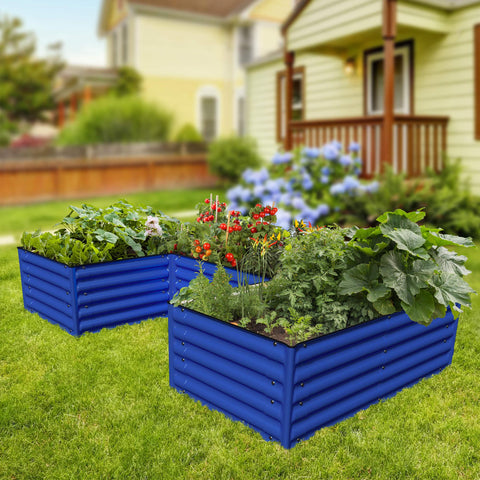What Is The Most Suitable Material For Lining A Raised Garden Bed?
Raised garden beds are a great way to cultivate a garden in a limited space, control soil quality and reduce the strain of bending and kneeling while gardening. One important aspect of building a raised garden bed is the material used to line it. A suitable liner will help to retain soil, prevent erosion, and maintain moisture. In this article, we will explore the most suitable materials for lining a raised garden bed.

1. Landscape Fabric
Landscape fabric, also known as weed barrier fabric, is a popular choice for lining raised garden beds. It is made from woven or non-woven polypropylene fabric that is designed to block sunlight and prevent weeds from growing. Landscape fabric is lightweight and easy to work with, making it an ideal choice for DIY gardeners.
To use landscape fabric as a liner, first, you need to prepare the base of your raised garden bed by removing any weeds, grass or debris. Cut the landscape fabric to fit the dimensions of your raised bed and lay it flat on the base. Secure the edges of the fabric with garden staples or heavy rocks. Finally, add your soil and start planting.
One of the drawbacks of using landscape fabric is that it can break down over time, allowing weeds to grow through. To prevent this, it is recommended to use a double layer of fabric and to overlap the seams.
2. Geotextile Fabric
Geotextile fabric is another type of synthetic fabric that is commonly used as a liner for raised garden beds. Unlike landscape fabric, geotextile fabric is designed to provide drainage and prevent soil erosion. It is made from a non-woven polypropylene fabric that allows water to pass through but retains soil particles.
To use geotextile fabric as a liner, prepare the base of your raised garden bed and cut the fabric to fit. Lay the fabric flat on the base and secure the edges with garden staples. Add a layer of gravel or crushed stone on top of the fabric to improve drainage. Finally, add your soil and start planting.
Geotextile fabric is more durable than landscape fabric and can last for several years. It is also resistant to UV light and can withstand extreme temperatures.
3. Cardboard
Cardboard is a natural and affordable option for lining raised garden beds. It is biodegradable and can be easily sourced from local stores. Cardboard can also help to retain moisture in the soil and improve soil quality by breaking down over time.
To use cardboard as a liner, remove any weeds or debris from the base of your raised garden bed. Lay the cardboard flat on the base and overlap the seams. Add your soil and start planting.
One of the drawbacks of using cardboard is that it can break down quickly, especially in wet conditions. To prevent this, it is recommended to use a double layer of cardboard or to cover it with a layer of landscape fabric.
4. Plastic Sheeting
Plastic sheeting is a common option for lining raised garden beds. It is made from a variety of materials including polyethylene, PVC, and polycarbonate. Plastic sheeting is easy to install and provides a barrier against water and air.
To use plastic sheeting as a liner, prepare the base of your raised garden bed and cut the sheeting to fit. Lay the sheeting flat on the base and secure the edges with garden staples or heavy rocks. Add a layer of gravel or crushed stone on top of the sheeting to improve drainage. Finally, add your soil and start planting.
One of the drawbacks of using plastic sheeting is that it can trap moisture in the soil, leading to root rot and fungal diseases. It can also break down over time and release harmful chemicals into the soil.

When it comes to lining a raised garden bed, there are many options to choose from. The most suitable material will depend on your personal preferences, budget, and gardening goals. In general, synthetic materials like landscape fabric and geotextile fabric offer better drainage and erosion control, while natural materials like cardboard and compost offer better soil quality and sustainability.
